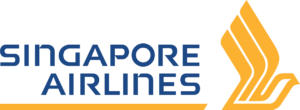Over the past year, across the board, airline mileage programs have gotten a lot less generous. And this makes a lot of sense–there were just too many people gaming the system and the programs were no longer good at doing what the airlines actually want them to do, which is attracting and retaining high-value flyers. These are typically “road warrior” business travelers who spend tens of thousands of dollars per year on airfares.
High value flyers don’t buy the kinds of deep discount, bargain basement tickets that you and I buy (like the $59 fare I recently bought from Phoenix to Seattle on Southwest, which even included two free checked bags). Actually, airlines lose money on those. Airlines make their money on last-minute tickets to and from business destinations. Want to fly from Washington DC to Cincinnati tomorrow, returning Thursday? It’s only 388 miles, but it’ll cost you a cool $709 in coach.
Delta was the first US program to go revenue-based, and the other two “Big Three” airlines United and American have more or less copied their program so I’ll use it as an example. Before the program went revenue-based, you’d earn credit based on a combination of your elite status and the number of miles flown. If you were an elite member of the SkyMiles program, you’d also earn a bonus. And for any flight, there was a 500 mile minimum. So here’s what your earnings would look like:
- 1000 miles roundtrip (500 miles each way)
- Mileage bonus (100% for Gold Medallion)
- Total: 2000 miles
A frequent business traveler (to get Gold Medallion status, you must fly 50,000 miles with Delta and you need to spend a minimum of $5,000) would get 2,000 miles of mileage credit. Someone like me (without elite status) would get 1,000 miles.
These days, with the big 3 major carriers, I’ll net just 5 miles for every dollar I spend. Gold Medallion members get 8 miles for every dollar they spend. So, for our frequent business traveler, here’s what the mileage earning looks like on the above flight:
- $709 x 8 equals…
- 5,672 miles
Our hypothetical business traveler is pretty happy. She’s getting almost 3 times the number of miles that she would have earned before. It almost makes visiting Cincinnati tolerable.
However, you and I aren’t buying a $709 last minute walk-up fare. We’re probably flying farther away than Cincinnati. And we don’t have Gold Medallion status. So we get only 5 miles for every dollar that we spend, and we’re buying cheap fares. Here’s what our earnings would look like for the same itinerary on a discount fare:
- $138 x 5 equals…
- 690 miles
See what happened? The number of miles people earn without frequent flyer status, and who didn’t buy an expensive fare, just got cut back. This may not seem so bad, but it gets a lot worse for longer flights.
For a $59 fare from Seattle to Los Angeles, where I previously earned 954 miles, I now walk away with only 295 miles! Bargain hunters get hit really hard on long international routes. Here’s an example. There was a $457 roundtrip flight yesterday on United from Seattle to Brussels. Routing via Newark, the mileage is 12,154 miles roundtrip. This is nearly enough miles for a free one-way ticket within North America. However, you’d now get just 1,750 miles instead of the full mileage credit. It’s a truly massive hit, so if you’re buying cheap fares, you need to look beyond the Big 3 frequent flier programs.
If you don’t have status and you buy cheap fares, you’re generally much better off with mileage earning programs versus revenue earning programs. Fortunately, there are still a few of these, and there are loopholes where you can still earn full mileage credit.
Alaska Airlines Mileage Plan is still mileage earning rather than revenue based, and Alaska has a very large number of partners. You can also transfer Starwood Preferred Guest points to Alaska. That’s the good news. The bad news is that if you’re flying on cheap fares, you usually won’t earn 100% mileage credit unless you’re flying Alaska. In fact, you can end up with as little as 25% mileage credit.
Still, it’s not necessarily optimal to earn 100% mileage credit if your miles get stranded in a program you seldom use and will have trouble earning enough miles in to redeem a free ticket before they expire. This is particularly true with international partners like Hainan, Emirates and Icelandair. Alaska should be viewed as a program that covers a very large number of partner airlines with middle-of-the-road value.
Let’s go back to our Washington to Cincinnati flight on Delta, and see how it looks if you’re using Alaska Airlines Mileage Plan. Because the program is mileage based, the amount of money spent on the flight doesn’t strictly matter–however, it does matter in practice, because earning is based on fare class. Airlines sort fares into buckets and the cheaper buckets are sold as a different “class” than more expensive ones. You can view Delta’s fare classes in this chart.

It’s hard to know or control which fare you are buying. Only the first class fare (P) gives 100% mileage credit.
If you sort the chart by “pecking order,” you’ll see that the fare classes more or less exactly follow the mileage earning chart that Alaska Airlines publishes for Delta flights. Note that most of the time, people shopping for flights just choose the lowest fare and it can be hard to know exactly what fare class you’ve booked into until after you have purchased a ticket . It doesn’t actually matter for this short flight, though. Alaska has a 500 mile minimum per flight! So, you’ll get 1000 points for the roundtrip no matter what fare you book. If you have Alaska Airlines MVP Gold status, you’ll get a 100% bonus for a total of 2,000 points. Obviously, frequent business travelers traveling on high fares won’t be better off doing this, but leisure travelers flying on low fares come out ahead.
The upside is that Alaska generally has competitive fares and serves a surprisingly large number of destinations from the West Coast. They are also in the process of merging with Virgin America (the deal is expected to close by the end of 2016), and the number of destinations will only grow.
This program is an absolute no-brainer for crediting Emirates, Icelandair and Hainan flights, because these airlines have very limited partnerships. If you’re flying American or Delta, also consider crediting your flights to Alaska Airlines Mileage Plan. You won’t get 100% credit on most fares, but it may be worth giving up to pool your credit in one program.
If you’re flying United, you have very limited options with StarAlliance airlines to accrue 100% mileage credit on discount fares. However, Singapore Airlines Krisflyer has a very competitive award chart and 100% accrual on United. The accrual rates on other StarAlliance programs are competitive with other programs as well.
There are some big sweet spots in the program:
- You can transfer points to Krisflyer from all of the major bank programs, including American Express, Chase and Citibank. This helps to top up your balance when you want to redeem an award.
- You can also transfer points to Krisflyer from the Starwood Preferred Guest hotel program (although, generally speaking, Alaska Airlines Mileage Plan is a more valuable transfer partner).
- The Krisflyer program doesn’t have a surcharge for last-minute award bookings, unlike United who charges $75.
Generally speaking, you should be careful when you accrue miles to a foreign frequent flier program; these typically charge fuel surcharges while most US-based programs don’t. Krisflyer is no exception. However, if you redeem your Singapore Airlines miles for flights on United Airlines, you won’t pay fuel surcharges within North America. Also, be sure to use your miles. They expire after 36 months!
Using Krisflyer miles is a little more complicated than using United miles because you have to book most awards over the phone. However, it’s a small inconvenience in exchange for the incredible value that Krisflyer offers.
Czech Airlines OK Plus is the only program that offers 100% mileage credit for the majority of Delta fares. The program also has some interesting rules, such as placing Iceland and North America in the same zone. And you get 2,000 bonus points after crediting your first flight to the OK Plus program. You can redeem OK Plus points on any SkyTeam flight, and the award chart is here.
The upsides:
- When you fly Delta, you get a minimum of 100% mileage credit on most fares. Some fares even give 200% mileage credit. This is more than you’ll get with other SkyTeam programs.
- You can travel all the way to Iceland roundtrip for just 35,000 miles! You can also travel to Central America or the Caribbean for the same price.
- If the Air France “island hopper” to from Miami to Cayenne is on your bucket list, this is an available option and is only 30,000 miles roundtrip.
- There are other “sweet spots” with the program, particularly when flying with Chinese airlines that are relatively stingy in other programs, and when redeeming award tickets from cities in central America.
- You’re allowed both a stopover and an open jaw. What’s more, you’re allowed to connect up to 8 times on an itinerary and connections can be up to 23 hours each. This is virtually unheard of in airline mileage programs.
There are some key downsides to the OK Plus program:
- You don’t get any miles at all on Delta “E” fares. These are encountered rarely, but should be credited to Alaska.
- Miles expire after 36 months, versus no expiration with Delta SkyMiles.
- All SkyTeam awards must be booked round trip. There are no one way awards.
- There is a 36 euro booking fee, plus an additional 50 euro fee if you use a transatlantic Delta flight, plus all applicable fuel surcharges. Given that a Delta flight is the highest value award (Delta’s seasonal flight from JFK to Reykjavik), it stings a little.
Like Singapore Airlines, you have to book your flights over the phone. This is a minor inconvenience, but isn’t a showstopper for most people.
Wrapping Up
Look beyond the mileage programs of the airlines you are flying. If you’re comfortable using the mileage programs of foreign airlines (and calling overseas to book award flights), you can still earn full mileage credit when flying with Delta and United, even on cheap fares. And if you credit cheap American Airlines fares to Alaska, you’ll generally do better than you would using the American Aadvantage program.
Good luck, and see you in the sky!




SQ miles also have a hard expiry after 36 mths.